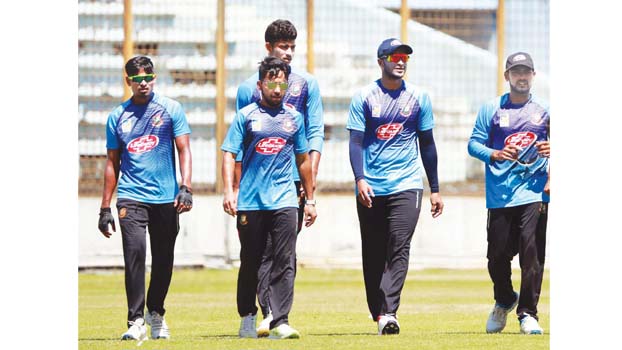Tigers will not gamble on pacers


To see three fast bowlers in the Bangladesh squad for the one-off Test against Afghanistan does cause a bit of a flutter, but everyone, including new pace-bowling coach Charl Langeveldt, knows that only one of the three will likely be in the playing XI come Thursday morning. Even after that, he will hardly be used, and along with the other two, who will run the drinks, bowl more during intervals than in the match itself, reports ESPNCricinfo.
Pace bowlers in Bangladesh's home Tests, particularly since 2016, have largely been ornamental, because team tactics, and the pitches and overall conditions, are stacked very, very heavily in favour of spin.
The selectors aren't doing too much to maintain a facade either. They dropped Mustafizur Rahman, the team's best pace bowler in all conditions, to give his back rest ahead of the upcoming white-ball games. But if they didn't pick at least two pace bowlers, the one-dimensional plans would become all too evident.
That plan is to let the four-pronged spin attack go on the hunt from the first hour. Captain Shakib Al Hasan is the leader, with Mehidy Hasan and Taijul Islam expected to back him up with their accuracy and subtle variations. That's the plan that has given them Test wins over England, Australia and West Indies at home, as well as one over Sri Lanka in Colombo two years ago. Nayeem Hasan, the impressive offspinner in the typical Bangladeshi mould, is the latest addition to the attack.
The four spinners combined to take all 40 wickets against West Indies, bowling all but four overs in the two Tests. Mustafizur bowled just four overs in the first Test before they went seamer-free in the second game. The death of fast bowling in Bangladesh? Courtney Walsh didn't quite agree at the time, but the question persists.
While that no-pacer Test was an extreme expression of Bangladesh's all-spin tactic, it was against England in 2016 that Bangladesh first adopted the plan. Bangladesh's pace bowlers have only shown improvement in ODIs, that too from the 2015 World Cup. In recent months, the Sylhet trio of Abu Jayed, Khaled Ahmed and Ebadat Hossain have been given some opportunities but the fear is that due to the lack of use, they might gather rust, making them less effective even in more favourable conditions overseas. In the last three years, Bangladesh's pace bowlers have been found wanting on the tours of New Zealand (twice) and South Africa.
But still, Afghanistan will have their plans in place for Jayed, Ebadat and Taskin, just in case they make the XI, ornamentally or otherwise. The pitch at Zahur Ahmed Chowdhury Stadium cannot be too spin-friendly, especially after being given a demerit point last year for being too flat. The last Test it hosted, between Bangladesh and West Indies, got over in three days with both fast bowlers and spinners taking wickets.
But Bangladesh are unlikely to venture too far away from their Plan A. How long they can keep it going, without a functioning pace unit, is an answer that only the Bangladesh team management, selectors and the BCB can answer. But as long as they are winning at home, pace will not be a priority.



